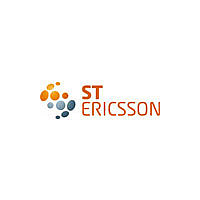STW4810CRAT/LF ST-Ericsson Inc, STW4810CRAT/LF Datasheet - Page 46

STW4810CRAT/LF
Manufacturer Part Number
STW4810CRAT/LF
Description
IC PWR MNGMNT MULTIMEDIA 84VFBGA
Manufacturer
ST-Ericsson Inc
Datasheet
1.STW4810CRAELF.pdf
(79 pages)
Specifications of STW4810CRAT/LF
Applications
Processor
Current - Supply
170µA
Voltage - Supply
2.7 V ~ 4.8 V
Operating Temperature
-30°C ~ 85°C
Mounting Type
Surface Mount
Package / Case
84-VFBGA
Lead Free Status / RoHS Status
Lead free / RoHS Compliant
Available stocks
Company
Part Number
Manufacturer
Quantity
Price
Company:
Part Number:
STW4810CRAT/LF
Manufacturer:
ST-Ericsson Inc
Quantity:
10 000
STw4810
The two bits of USB control register dp_pullup and dn_pullup (
connect/disconnect pull-up resistors.
Session Request Protocol (SRP)
To save power, the OTG supplement allows an A-device to leave the VBUS turned off when
the bus is not being used. If the B-device wants to use the bus when VBUS is turned off,
then it requires the A-device to supply power on VBUS using the Session Request Protocol
(SRP).
●
The B-device does not attempt to start a new session until it has determined if the A-device
has detected the end of the previous session. The B-device must ensure that VBUS is below
VBUS_SESSION_END before requesting a new session.
Additionally, the B-device switches a pull-down resistor (R_VBUS_PD) from VBUS to
ground in order to quicken the discharge process as long as the B-device does not draw
more than 8 mA from VBUS. R_VBUS_PD is activated by bit ‘vbus_dischrg’ of USB control
register 2, (
When the B-device detects that VBUS is below the VBUS_SESSION_END and that both
DP and DN have been low (SEO) for at least 2 ms, then any previous session on the A-
device is over and a new session can start.
●
To indicate a request for a new session using the data line pulsing, the B-device turns on the
DP pull-up resistor for 5 ms to 10 ms (only at full speed, no DN pulsing). The DP pull-up
resistor is connected to VUSB (regulator output voltage). Timing is controlled by the USB
digital control.
●
To indicate a request for a new session using the VBUS pulsing method, the B-device waits
for the initial conditions and then drives VBUS. VBUS is driven for a long enough period for a
capacitance on VBUS that is smaller than 2x6.5 µF to be charged to 2.1 V while a
capacitance on VBUS higher than 97 µF is not charged above 2.0 V. In this USB block, the
VBUS_SESSION_VALID threshold is used to determine if an A-device is DRD (dual role
device) or a standard host.
The B-device VBUS pulsing block is designed so that the maximum drawn current does not
exceed 8 mA. In this USB block, the pull-up is 600 Ω +/- 30%.
If a B-device is attached to a standard device, the pull-up must be disconnected after the
defined timing to prevent damage of standard hosts not designed to withstand a voltage
externally applied to VBUS.
●
If the B-device is in correct condition to start a new session, it first performs data line
pulsing, followed by VBUS pulsing. When VBUS next crosses the SESSION VALID
threshold, the B- device considers a session to be in progress and asserts the DP or DN
data line within 100 ms. After SRP initialization, the B- device is set up to wait for at least 5
seconds for the A-device to respond before informing the user that the consumption attempt
has failed.
Initial conditions
Data-line pulsing
VBUS pulsing
Session Request Protocol (SRP)
Table 12
).
Table 12
Functional description
) are used to
45/78
















